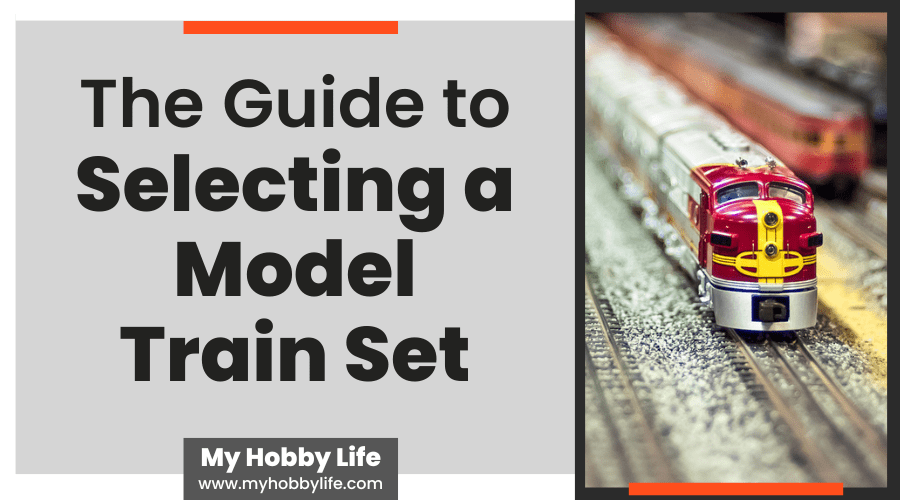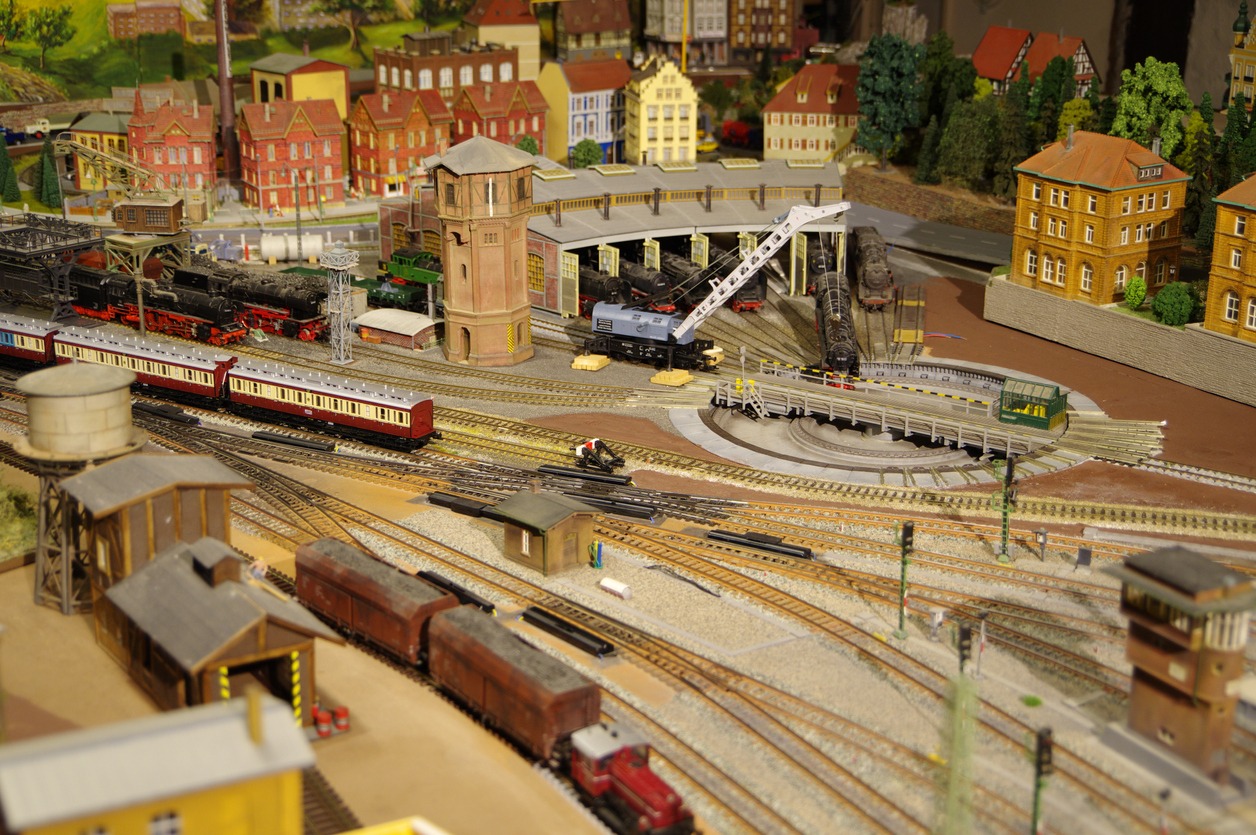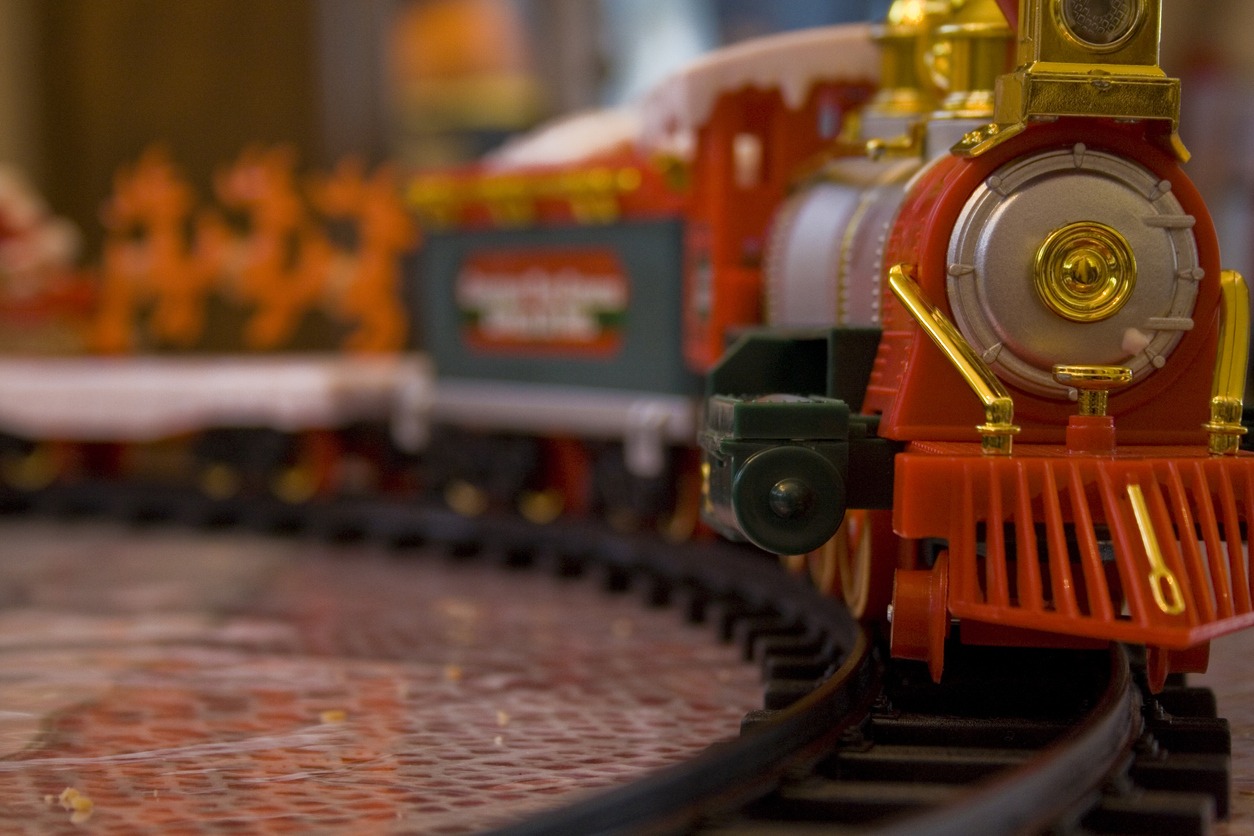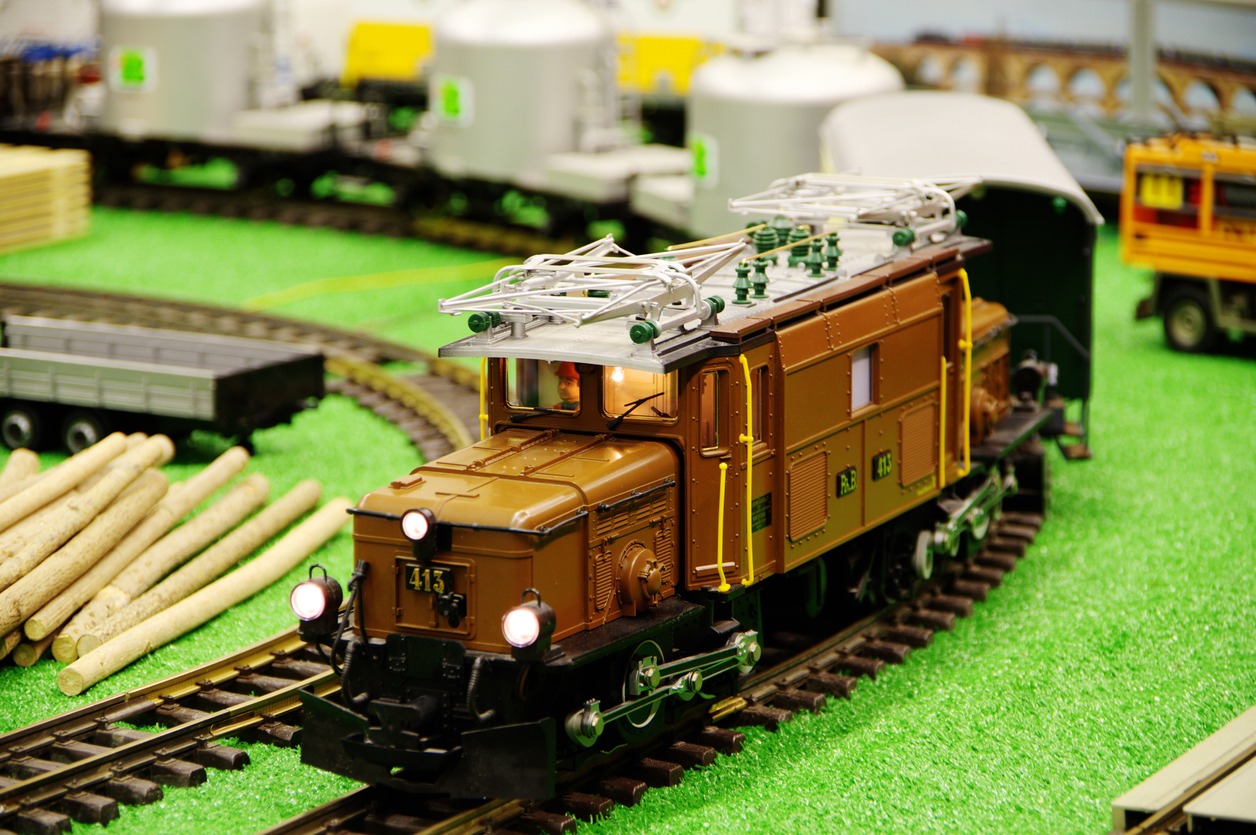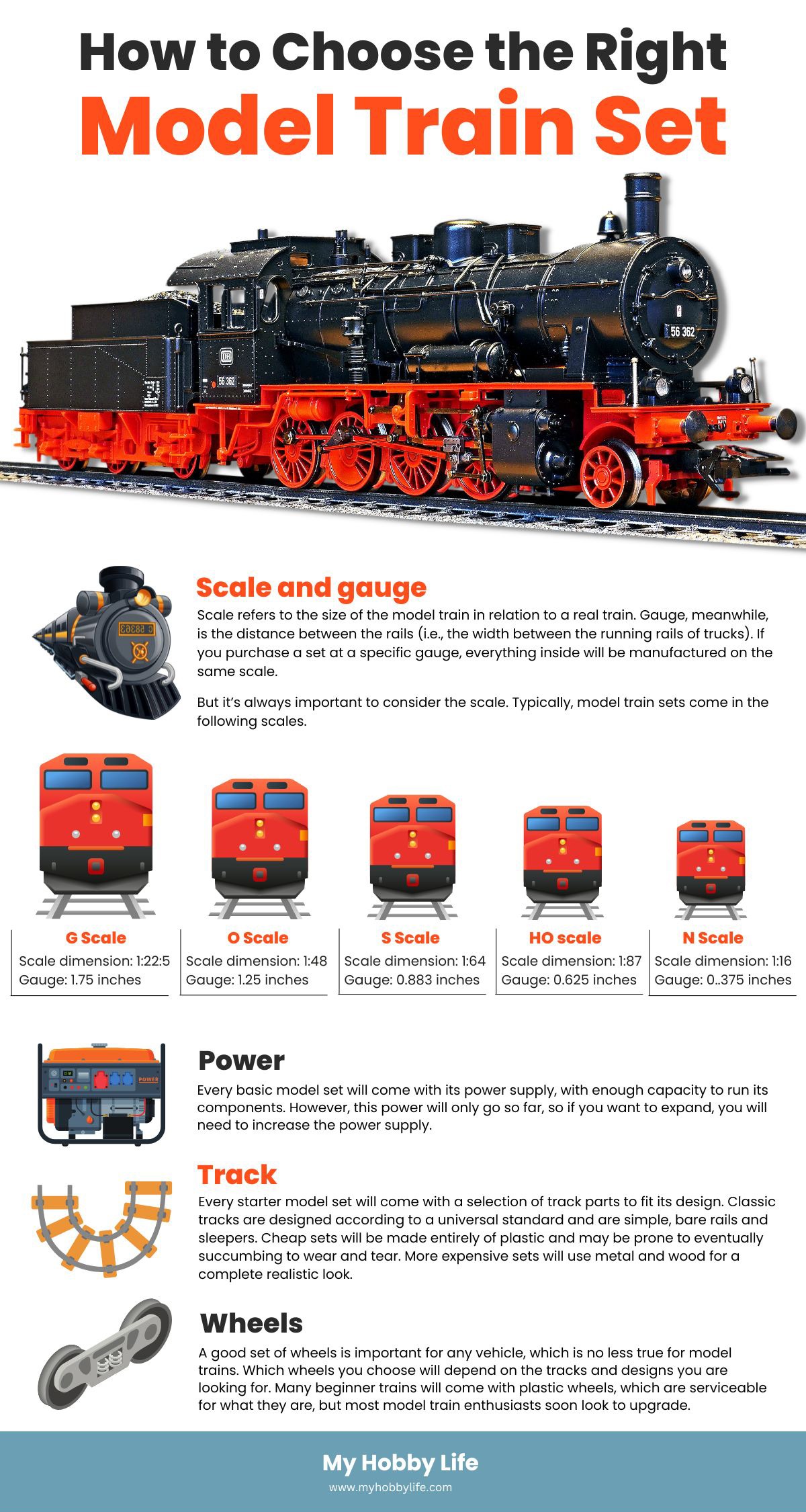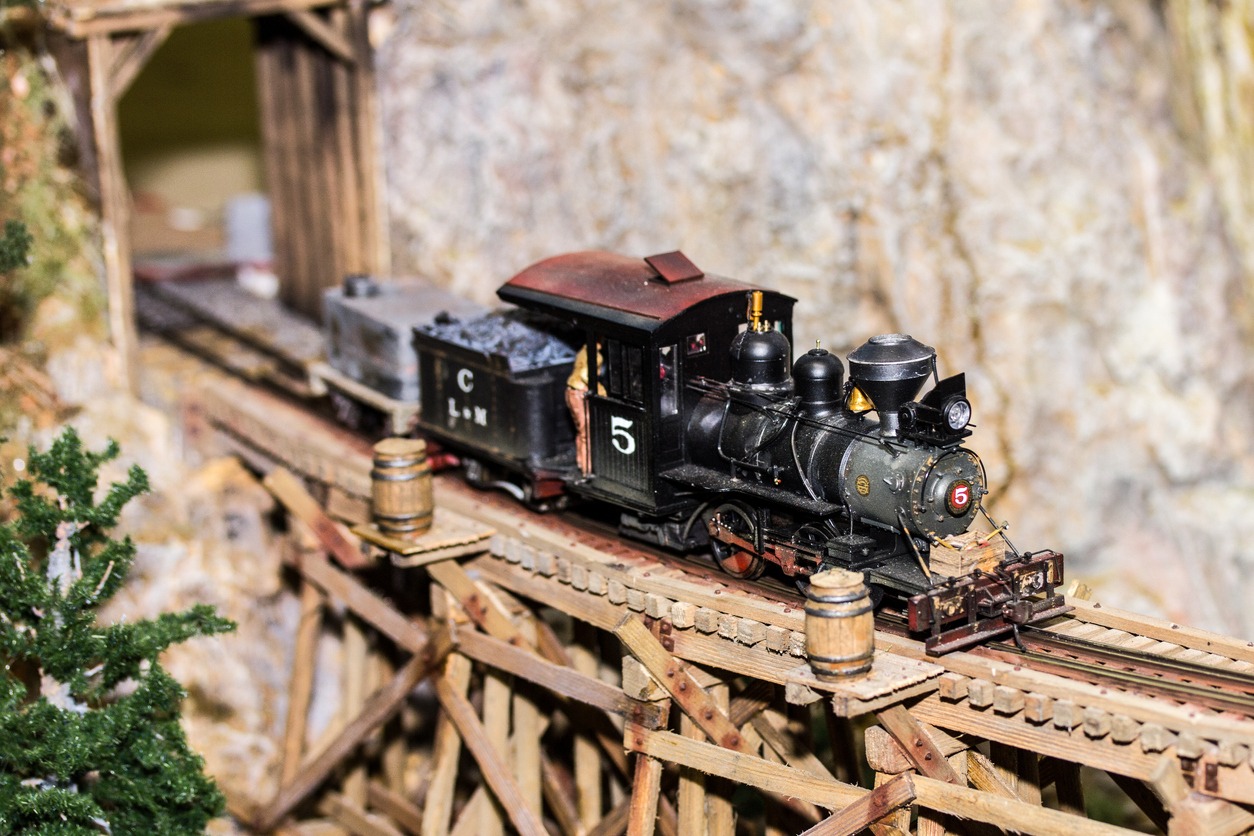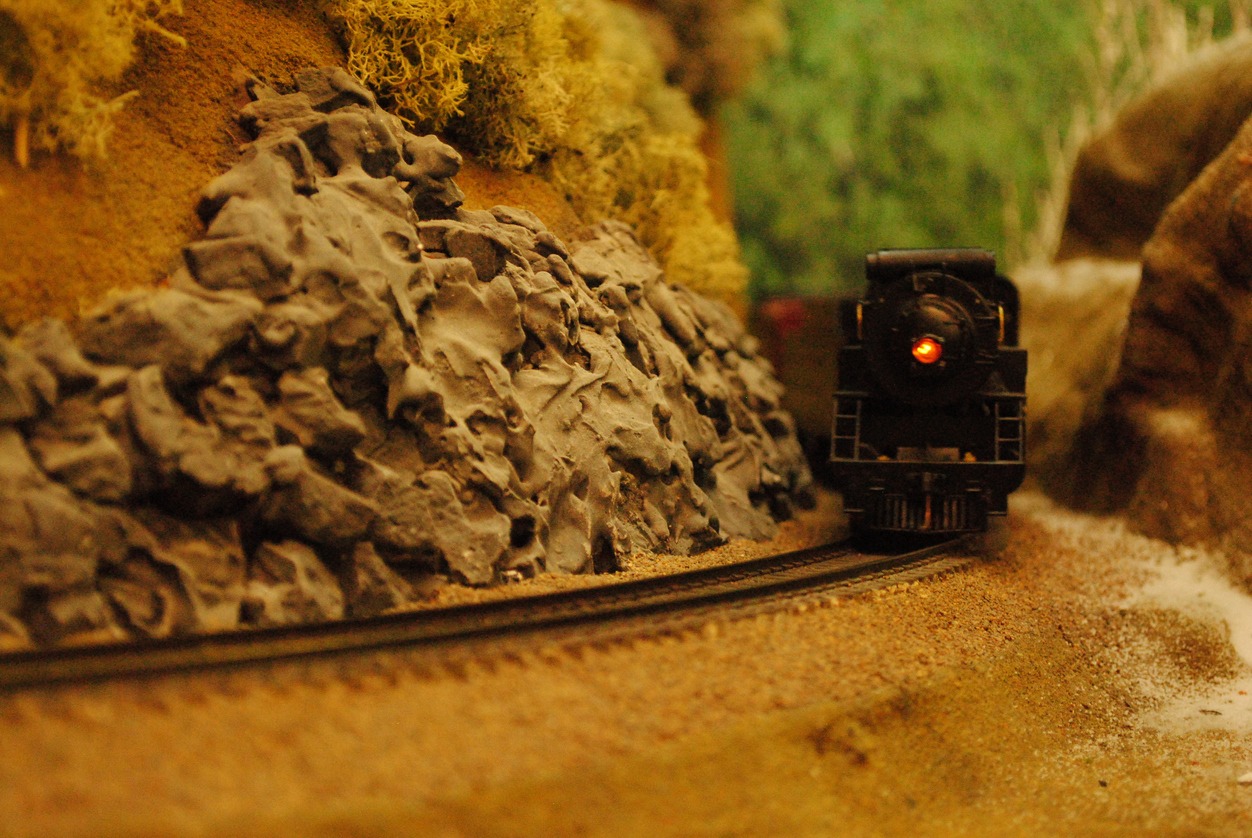Want to take up a hobby that Walt Disney and Rod Steward enjoyed in their time? Then explore the fascinating world of model trains, where you can make new stories, worlds, and stories while gaining a sense of purpose and community. Although some people prefer standing at the end of stations watching real trains, there’s nothing wrong with channeling your likeness for trains into building your own collection.
Imagine having a miniature landscape with long trains piercing forested mountains, crossing majestic viaducts, and running from large stations. With a bit of spare cash, suitable space, and creative thinking, all these things and more are possible. People can pass down model trains from generation to generation—building them can be a lifelong pastime with many crafting layouts after hours of planning and brainstorming.
Getting started can be a little overwhelming, though, because there’s no shortage of model train sets in the market. Then you have different brands to choose from. Not to mention, the different aspects of a model train can leave most hobbyists confused. What does DCC mean and what exactly is a gauge?
In this post, we’ll educate you on the key terms associated with model train sets. You’ll also learn what to look for in a model train and the best brands available for this hobby item. By the time you finish reading, we’re confident that you’ll be up to speed with everything you need to know to select your first model train set (and have fun with it).
A Little on The Model Train Hobby
At first glance, the model train hobby may seem like it doesn’t offer any learning opportunities. However, the reality is quite the opposite. When adopting the hobby of railroads or model trains, you’re free to use your artistic creativity and imagination in myriad ways. Build unique scenes, set railroad tracks in different ways, and do whatever you like to exercise your imagination.
Having a model train hobby also helps enhance fine motor skills. Whether pulling the trains around or assembling, building, or painting settings for the tracks, the activity plays a critical role in improving dexterity (the ability to use hands skillfully when doing something). This can provide many more benefits than simply watching television or engaging in activities that don’t require physical input.
The model train hobby also offers a way to socialize with other enthusiasts. Whether it’s an association or a club, a range of social circles is dedicated to the hobby of model trains and railroading. Showcasing your train set to others and sharing ideas on the unique, fun scenarios can help you feel a sense of success through a safe hobby. Moreover, it’s easier to be patient when you have fellow model train hobbyists to communicate with—remember that getting the ideal model train set can be a complicated process requiring patience.
Some other benefits associated with the model train hobby
- The model train set can be set up indoors (raining outside? No worries)
- You develop planning skills as you strategize the final layout of the model train
- You improve hand-eye coordination and movement
- Several great model trains are available
- Unlike simulators in games, you actually own a physical train set that you need to organize
- Model train railroads and scenarios improve your problem-solving
Model Train Terminology
Understanding the different parts of a model train is the key to choosing the best item for your hobby. Here’s what to consider:
Gauge
The gauge of a model train refers to the size of the tracks on which it will run. This is the measurement of the gap between the rails on a scale of inches to feet. For example, the most common model trains have a gauge of 1.25”. This means that the rails will be 1.25” apart.
DCC
This means Digital Command and Control, referring to how you control the trains and tools of your model. This is the DCC that your model train will use. The trains and rakes are typically controlled through a computer, mobile device, or remote control.
Locomotive decoder
The locomotive decoder is a chip built into the model that converts the controller’s electric signals into instructions. This usually amounts to commands such as start, stop, speed up, and slow down.
Accessory decoder
Like the locomotive decoder, the accessory decoder is a chip within your train’s layout that controls aspects. This can be things like railway switching, bridges, turntables, or lights.
Bus
The bus is a wire that connects the DCC to the various accessories and rails around your layout. It usually encircles the whole setup and uses dropper wires to branch off to the various controllable parts. The bus is also known to help improve the rate of commands passing from the DCC.
Volt, Watt, Amp
As you may know, electrical current is measured in amps, with volts being the measurement of electrical pressure running through the wires. Watts, then, are the measurement of the volts multiplied by the amps. This will determine the electricity needed to run your model train system.
Solenoid
The solenoid is a chip in the models that converts an electrical charge into instructions for the decoders. These are instrumental in turning the trains’ motors or opening and closing the clamps on brakes or rails.
Fiddle Yard
The fiddle yard is the name given to the part of the track hidden from view. Typically, you use this area to work on or “fiddle” with the trains. It can be used to turn them around or move them into storage.
Bogie
The bogie is present in all aspects of your train: the locomotive, the carriage, and the coach. It is the name of the structure on which the carriages rest. It holds and attaches the axles and wheels to the undersides of every carriage. A bogie can also be customized using bolster strings, brake beams, and bearings for improved handling and control.
Double Heading
Adding two or more locomotives to the front of your rake will increase the haulage power they provide. This is known as a double heading. It gives trains greater strength and allows them to carry larger loads.
DMU and EMU
Diesel Multiple Unit and Electrical Multiple Unit are the terms given to the kinds of trains commonly found in cities. These trains consist of a series of carriages with cabs on either end. This setup allows the train to move in both directions. This way, they don’t need to be turned to return on their rails.
Tank Engine
Tank engine trains are run on steam engines. They usually have an additional storage hold that carries additional water and fuel so that they can be refueled as it travels. The engine itself is also submerged in water to cool it during use.
Flange
The lips that run along the inner edges of the wheels are known as flanges. They allow the train to slot between the rails and stop the wheels from slipping free. This is especially important for curves and corners, as flanges will prevent the train from derailing.
Rake
A train can be made of many different types of carriages. A train with a cab, a coach, a locomotive, a cargo hold, and more carriages is known as a rake.
Ballast
Railways have three main components: sleepers, rails, and ballast. The ballast is a layer of crushed rock that the sleepers rest on. It works to bear the weight of trains as they travel and drain excess water from around the rails.
Aspect
The aspect of a railway is the series of signs and signals that create instructions for train drivers. When it comes to model railways, these may not serve a practical purpose, but they help make your rail system look more accurate.
Cutting
Trains do not travel up and down hills very well, so railways need to be cut into them to allow easy passage. When a hillside is cut away for this purpose, it is known as a cutting, and it serves many uses, such as reducing the amount of fuel used to run trains. They also add a beautiful dynamic to any model railway.
Y Point
The train equivalent of a T-junction, a Y Point, is a junction for trains. A train track splits in two directions, forming a Y shape, hence the name. These are ideal for allowing one track to go in two opposing directions.
Viaduct
Trains occasionally need to be lifted from the ground. In cities or around hilly areas, train lines are designed to travel over open spaces, streets, or rivers. The structures on which the rails are carried over these things are known as viaducts.
Buffer
At the end of each railway, you will find a crossbeam driven into the ground. Across these beams are two large, round disks attached to rods. These are known as buffers. They serve the dual purpose of marking the end of the line and helping a train stop and settle into place. Usually, a train will have its corresponding pair of buffers that will rest against them when they come to a stop.
How to Choose the Right Model Train Set
When purchasing a model train set, there are a few things you should evaluate. These are:
Scale and gauge
Scale refers to the size of the model train in relation to a real train. Gauge, meanwhile, is the distance between the rails (i.e., the width between the running rails of trucks). If you purchase a set at a specific gauge, everything inside will be manufactured on the same scale.
But it’s always important to consider the scale. Typically, model train sets come in the following scales.
Model train scale | Scale dimension | Gauge | Great for |
G Scale | 1:22:5 | 1.75 inches | Outdoor use (garden), large indoor spaces |
O Scale | 1:48 | 1.25 inches | Building permanent tabletop layouts |
HO scale | 1:87 | .625 inches | Building layouts in a small space |
N Scale | 1:16 | .375 inches | Building a decent-sized layout in a tight space |
S Scale | 1:64 | .883 inches | Model train contests where aesthetics matter the most |
Power
Every basic model set will come with its power supply, with enough capacity to run its components. However, this power will only go so far, so if you want to expand, you will need to increase the power supply. The bigger the model, the more power it will need. If you don’t provide enough power, your trains and other powered components, such as lights or switches, won’t run at the correct speed or at all. Bear this in mind when you want to add more lines, trains, and features to your system.
Power supplies also come in three types.
Model train power options | |
Alternating Current (AC) | Used for systems with two or three rails |
Direct Current (DC) | Only used in two-rail systems |
Digital Command Control (DCC) | Ideal for bigger systems and is rarely supplied with beginner sets. |
Track
Every starter model set will come with a selection of track parts to fit its design. Classic tracks are designed according to a universal standard and are simple, bare rails and sleepers. Cheap sets will be made entirely of plastic and may be prone to eventually succumbing to wear and tear. More expensive sets will use metal and wood for a complete realistic look.
Most newer sets will come with the rails set into an integrated roadbed – a plastic base with an imitation ballast. However, each manufacturer of model rails has its proprietary base design. As a result, many are incompatible, meaning multiple sets cannot be constructed together, as they will not fit. They are ideal for beginner model train enthusiasts but remember that if you’re thinking of expanding, you will need to consider what you use. Some people stick to a single brand, while others use classic rails to allow complete freedom of construction.
Wheels
A good set of wheels is important for any vehicle, which is no less true for model trains. Which wheels you choose will depend on the tracks and designs you are looking for. Many beginner trains will come with plastic wheels, which are serviceable for what they are, but most model train enthusiasts soon look to upgrade.
Metal wheels are much more stable than plastic and range in style, design, and weight. They are also much easier to clean than plastic wheels. However, you must ensure that the wheels you choose are compatible with your models. Luckily, every manufacturer will provide various model wheel options, so you can always contact them for advice and suggestions.
Shopping For a Model for The First Time
As a first-time model train buyer, you might decide to visit a hobby shop. That’s not a bad decision—salespeople at these stores are often kind and offer genuine advice. Got questions about the model train? Ask without hesitating. You can also search for things on Google, and then come up with a list of things to ask the reps. Be clear about your own preferences before making a purchase.
It’s also a good idea to read online reviews to learn about the experience and possibilities offered by a specific model train. Once you’ve done the research, the decision to purchase in-store or online is a matter of personal preference.
Popular Model Train Brands
Cheap model train sets can break quickly, so I highly recommend that you buy from a reputable brand. Here’s a list of some of the best manufacturers of model train sets:
Lionel, LLC. (Scales HO and O)
As one of the oldest model train makers in the world, Lionel is known for producing high-quality O scale and HO scale trains. It started with only locomotives and standard trains but later branched out to RTR (ready-to-run) train sets, essential gears, and railroad accessories.. Lionel’s sets come with a locomotive with tender, observation car, passenger car, curved plastic track, and much more. Plus, they boast Bluetooth functionality.
Lionel’s popular train sets include the The Polar Express Ready-to-Play Set. A Christmas spirit showstopper, the Polar Express has a dedicated track system allowing users to create an oval, rectangle, or circle track. It’s a great model train for holiday decorating and for those new to the train modeling hobby. You can also check out Pennsylvania Flyer Freight Ready-to-Play Set. Featuring one of the renowned names in railroading, this ready-to-play set is sure to turn heads at hobby train clubs. Hobbyists can unload and load the box load from the gondola and say adios to the red caboose. It’s a train set suitable for all ages.
Märklin (No. 1 Gauge)
Want a model train set that’s “Made in the USA”? Then shopping with Märklin is your best bet. The brand makes all of its trains in the US, and only top-notch stuff comes from their factory. You’ll find model trains, rolling stock, and railroad sets in various scales, Märklin model trains have premium prices, so they might not be suitable for purchase when you have gained some experience in the model train hobby.
One of the popular trains from this brand is the Märklin V 200.0, which comes with a highly detailed set that comes with German Federal Railway Lettering. Märklin 37209 Diesel Locomotive is another option with, with parts and chassis both produced with metal. The train also has the popular mfx+ digital decoder and ample light and sound features. Hobbyists can also check out Märklin 36244 Steam Locomotive Series 24, a unique model train with various small details, such as the spoke wheels apparent. The Wagner wind deflectors, metal boiler with cable guide, and replica rivets make this a real eye-catcher.
Walthers (Scale HO and N)
Walthers is popular for its HO And N scale model trains. Most of its trains comes with a couple of cars, and you can always get more cars in different styles if required. If you’d like a bit more coloring and detailing, the manufacturer has you covered there too—many of its models will make a great addition to a park or outdoor garden if you need to take it outside.
Walthers’ most suitable offering for beginners is the Trainline HO Scale Model EMD GP15. This model train has a heavy die-cast metal frame for ample pulling power and body-mounted knuckle couplers (magnetic). The hobby grade set comes securely packed for safety in logistics. Trainline HO Scale Model, WiFlyer Express Train Set is another good option. You get 8 assembled cars with meta knuckle couplers and assembled wheels, along with a matching wide vision caboose (Norfolk Southern smooth style gondola). This is an all-in-one set with improved Power-lock track.
Kato USA (Scale N, Some HO Varieties)
Kato USA, the subsidiary of the Japanese company Kato Precision Railroad Models, is widely recognized for its N scale model train sets. Their detailing is unlike anything you’ll see, especially when you check out its European high-speed and Japanese bullet trains. Kato’s train sets are neither expensive nor cheap—they are best for mid-range buyers. Most of Kato’s trains have a high level of detailing and three cars for beginner hobbyists.
New York Central 20th Century Limited 9-Car Set is a good starting point. This model train set features a specific exterior and interior that aligns with the 50’s era train, including some iconic cars like the big window. The shock absorber construction ensures you get performance and traction on various surfaces. But for a semi-modern appearance, the N 4-8-4 FEF-3 Union Pacific Greyhound #8444 is the most appropriate. It works with for both historic and modern layouts. And boasts a coreless motor design with flywheels to ensure good performance.
Bachmann (Various Scales)
No list of model train brands can be complete without Bachmann, a brand specializing in G, HO, and N scale models. Bachmann’s model trains are ideal for serious hobbyists. Its train sets come with Steam Era Locomotive and Tender, E-Z track, and a speed controller, among other features. You’ll also find a light signal for location in Bachmann train sets, and customers also receive the option to uncouple with the remote.
Pacific Flyer Ready To Run Electric Train Set is Bachmann’s best RTR train set. It is powered by a Steam Era Locomotive and Tender (0-6-0). It comes with a box car, an off-set cupola caboose, and a gondola car. You also get a 36-inch circle of E-Z track, a speed controller, and a power pack. Another good set is Rail Chief Ready To Run 130-Piece Electric Train Set. This model train set includes the core train powered by Diesel Locomotive (EMD GP40) with an operating headlight. This product also offers street signs, miniature figures, telephone piles, an open quad hopper car, and much more.
Selecting the Scenery
The scenery of your model railway system is all the details surrounding your tracks. The geographical touches and flairs give the railway a feeling of realism and setting. This is easily the most customizable aspect of model railways and something many hobbyists will put years of effort into.
Your scenery can be whatever you want – a sprawling cityscape, a quaint country town, rolling hills, and rivers. If you can imagine it, you can build it. Any good hobby shop, online or on the high street, will provide many products to help you bring your vision to life.
Many begin planning their scenery around the era in which their railway will exist. The types of trains you use could be dictated by this, with some people choosing to set their railways in model-specific times. You may want to research the era to buy appropriate supplies in these cases. Certain styles of buildings or decorations, such as vehicles, will be informed by this decision if you are looking to create a historically accurate scene.
You will also need to consider the season that your railway exists in. Since time does not move for a model, you will want to make sure all the natural materials you use will match. Spring settings will require fields of flowers, luscious green trees, and young wildlife. Fall scenes will be more muted, using reds and oranges, autumn crops, and warmly bundled people. Snowscapes and dead trees will bring any winter scene to life.
The scenery also incorporates the kinds of uses your trains have in real life. If your chosen models are freight trains, you’ll want your various stations to be loaded with crates and packages. Passenger trains rely entirely on a posse of passengers, so small towns packed with people will make your trains feel wanted and used.
Finally, consider other aspects of your scenery, such as rivers, lakes, and roads. Many aspects of your scenery don’t have to interact with the rail itself but will provide a sense of life and vitality to your model world. The world around it creates a sense of realism for any model railway.
Railroad planning
Planning your railroad’s layout is always the most daunting task. You may have a thousand ideas clashing in your mind or none beyond your desire to build. Either way, the biggest mistake you can make is to rush. Going too big, too fast, is a recipe for disaster.
You can plan your railroad in two ways – by hand or by computer. Most people will generally begin by making a rough sketch of their railroad on a pad with a pencil. This will allow for easy alterations and amendments. There are several kinds of railroad planning software out there, as well. Some are as simple as a sketch pad, up to fully-3D models that can be meticulously planned. Try out each and see which you find easiest.
Begin with a small layout – a good place to start is 4 x 8 feet. Experiment with a few drafts of what you can do in that space, using as many or as few pieces as possible. Even if you only begin with a simple oval, there are many things you can do with it. Eventually, you will have the ability to add further branches and curves to it. After all, even the most impressive large models once began as a small set.
You will also need to consider where you intend to set up your model. Some people are lucky enough to have a whole room or garage that they can dedicate to their creation. Others are not so lucky and only have a table or corner of a room. Either way, this will give you an idea of the area you have to work with and which areas of the space will be visible. You will want to make your rail visible from many angles, perhaps with interesting quirks that can only be seen from certain ones.
Another aspect beginners forget about is accessibility. If your model is set up in a space where one or more sides are against a wall or otherwise blocked, you will need to consider this. Leave spaces where you can access your rail to make changes or repairs – some people have under-table hatches or other mechanisms. Others design their tracks thin but wide, so they can easily reach across.
The location you choose will also determine what kinds of materials you can use to build with. Basements and attic spaces tend to be more humid than main rooms. This means that softer materials or exposed electronics are at risk from dampness or mold and will affect what kinds of setting your track will run through.
Are model trains collectible?
Model trains can be worth thousands of dollars if the owner keeps the original box and the original item is in good running condition. Brands like Lionel suggest that model train collecting is a hobby for all ages.
How can I clean and maintain my model train?
1. Use a damp cloth to clean your wheels – well-cared-for wheels will always run well, so regularly take them off and wipe them with a damp cloth. If ignored, your trains will run the risk of derailing.
2. Keep the rails clear – like with real rails; it is important to ensure your rails are clear of dirt and debris. Wipe them down regularly and clear any dust or dirt to prevent disasters.
3. Don’t put your trains on dirty surfaces – keep your models in cases when not in use, and never put them on the floor. These surfaces will only work to mess up your well-cleaned trains.
4. Ensure the power voltage doesn’t drop or surge – keep your powerlines maintained and properly upgraded, as letting them run low could damage your model’s motors. The same is true of power surges.
5. Keep your cabs oiled – a good rule of thumb is to oil your model’s cabs after every 100 hours of run time. This will prevent seizing or burnout of axles or motors.
Where do I sell my model train?
Switching to another brand or want a replacement for your old model train? Here are the places that can help you recoup some of your original investment:
- Hobby shops
- Online auction sites
- Toy Fairs
- Model Railway Exhibitions
You can also advertise in the local and model railway press to see if you get any leads for your model train set.
Wondering how much you’ll potentially earn? An old model train can be worth less than $100, but it can also net you over $5,000. It all comes down to factors like production run, train set rarity, traits, etc.
Conclusion
And that’s it—you now have all the knowledge you need to select a suitable RC model train set. Ultimately, the choice will depend on your design preferences, budget, and how much you’re into assembling the train yourself.
Ready-to-run train sets are great for those who want to get started with the hobby without stressing over the building and assembling part. However, you can also find Plug-and-play train sets, which enable you to customize some aspects and components of the train.
But whatever mode train set kit you choose to buy, make sure to shop with a reputable brand instead of an unknown manufacturer. A reliable brand’s train set is unlikely to deteriorate quickly, and you might even get a warranty to help protect your investment. As long as you stick to the brands we’ve listed in this post, you should be good.
